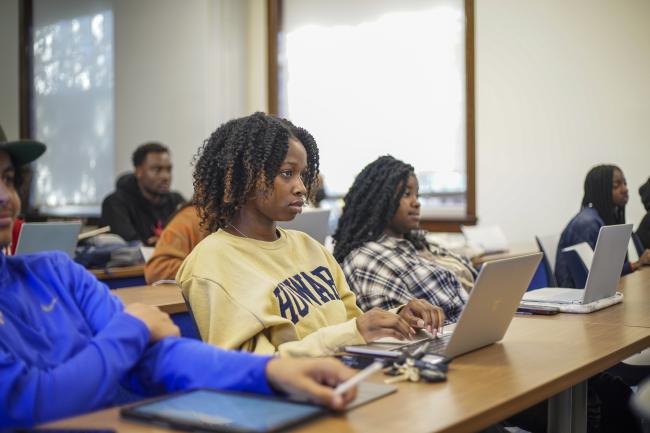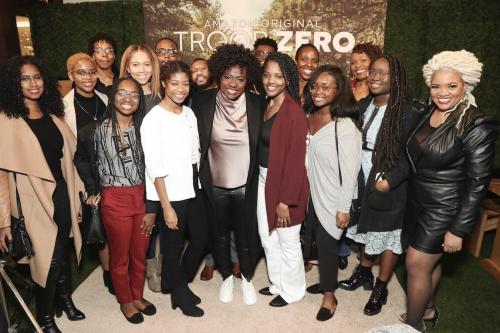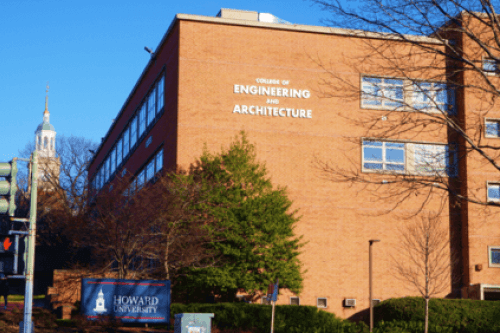Upon its founding in 1867, Howard University began with four colleges: Arts & Sciences, Pharmacy, Medicine, and Law. Today, nearly 10,000 students can pursue degrees throughout the University’s 140 majors that consist of 14 colleges.
This prompts a question for administration: How does Howard University provide a standard, quality education for a diverse set of educational needs within the ever-changing landscape of contemporary education?
Provost Anthony Wutoh, PhD, RPh, provided insight into the building blocks of a well-rounded, evergreen education. Internally, Wutoh mentioned internal practices that all 14 colleges follow to maintain excellence in the modern educational landscape.
“My role as provost is to provide oversight and support so that we can provide the strongest academic programs and support our students in the most effective way, regardless of the discipline that they’re pursuing,” he said., noting that Howard uses metrics to review across the institution, including retention rates and graduation rates, among others.
“How well are our students doing when they’re applying to graduate or professional schools? How are our students doing in the work force? We have the opportunity for students to provide feedback from individual courses during the course evaluation process.”
All colleges adhere to accreditation, the measure of a student’s ability to excel within given material. Depending on the school, different agencies examine colleges on their accreditation.
The College of Pharmacy is the only college tested by the Accreditation Council for Pharmaceutical Education. Wutoh mentioned that each college performs internal, university-wide metrics in addition to third party review.
Certain colleges expand and contract to adapt curriculums that reflect both workforce and cultural needs.
From 1970 to 1997, The College of Engineering was established as two schools: the School of Engineering and the School of Architecture and City Planning. In juxtaposition to American history, the renaming correlates with the emergence of the Housing and Urban Development Act of 1965 under the Lyndon B. Johnson administration. Between 1969-1972, the U.S. government funded the development of over 340,000 units of public housing.
Without the school of dentistry, DC’s residents are likely to go without oral treatments, widening the health equity gap amongst all district residents. College of Dentistry Dean Andrea D. Jackson, DDS,. said the issue prompts specific responsibilities.
“We feel like it's our job to serve underserved communities,” Jackson said. “So in part to Howard’s truth and service, we want to reflect that in our mission as well.”
With a service provider gap, the College of Dentistry embeds community outreach and service for DC residents that are coursework for students.
Interpersonal relationships among the colleges thrive in these scenarios too: The College of Dentistry partners up with Howard University Hospital to provide services to patients on a referral basis.
“We deliver interprofessional education in our services to the youth,” Jackson said. “We have a partnership of Bright Smiles, Bright Futures with Colgate, we have Delta Dental Community Cares Foundation where we have a senior oral health coalition where we are focused on bringing seniors into the University as patients because they get neglected as a population for dental care.”
Outside of internal opportunities to engage in related studies throughout the university, Howard administration ensures partnerships with businesses for real-world experience in their fields.
That responsibility belongs to Calvin Hadley, the senior advisor to the president for strategic initiatives. Building a pipeline that ensures career readiness is an overarching aspect of all of Hadley’s programs.
Amazon Studios – Howard Entertainment is one of Hadley’s initiatives to increase and diversify the number of Black entertainment workers through a partnership with Howard University and Amazon Studios. Since the program is eligible for fine arts, film and TV, public relations, management, and marketing, and 2L law students, four different colleges participate in Howard Entertainment.
This initiative, Hadley said, is one of his many responsibilities to “identify barriers and provide solutions” that may affect Howard graduates in the work force and create inner dialogue among the 14 colleges.
“We didn’t want to just create a program that would create better actors or better directors, but (answer) how do we have access?” Hadley said. “How do we give our students access to the full breadth of this very diverse industry? We then had to work very closely with each school or colleges to better understand their needs, their perspectives, and incorporate them into building the program...to better understand how to bring that team together throughout these very diverse spaces with very diverse needs to create on program that could really speak to individual needs of each college.”






